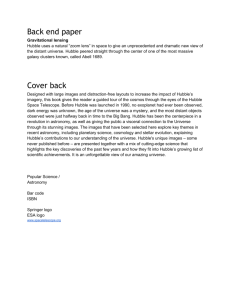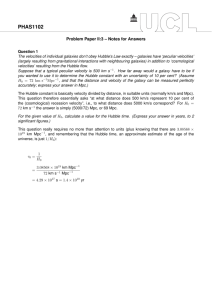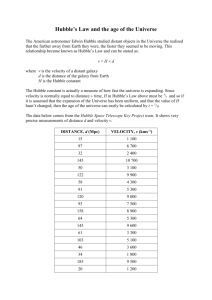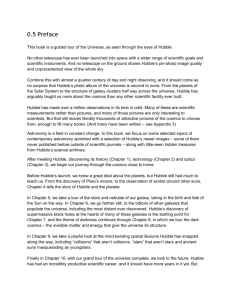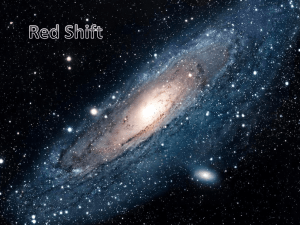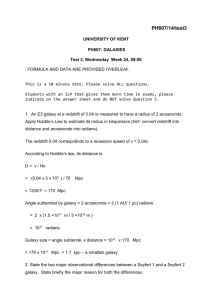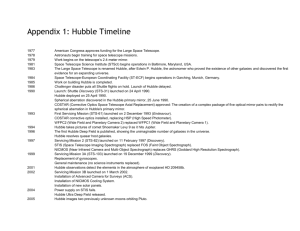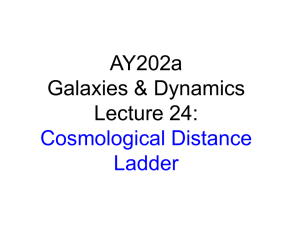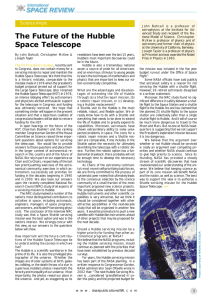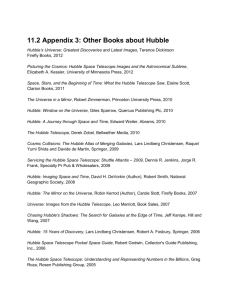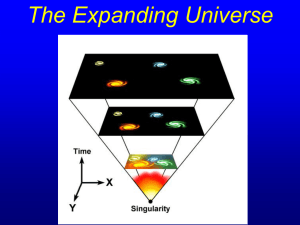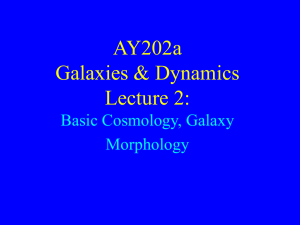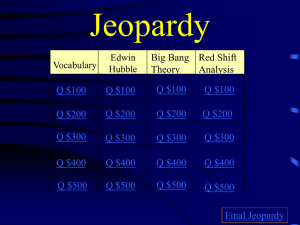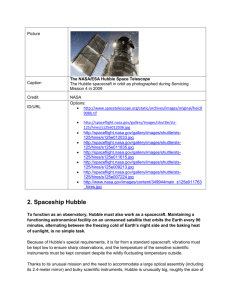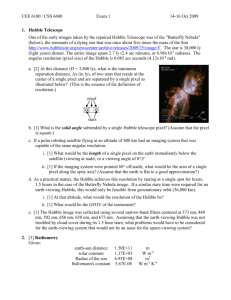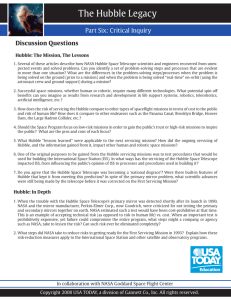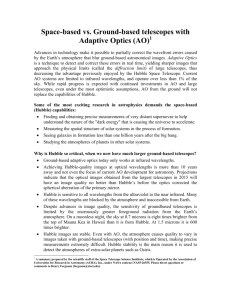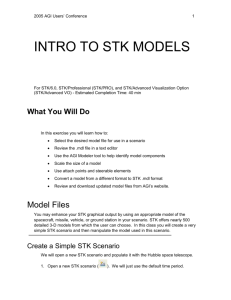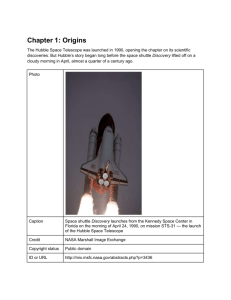Hubble (1929) PNAS, 15, 168 - Department of Astronomy
advertisement
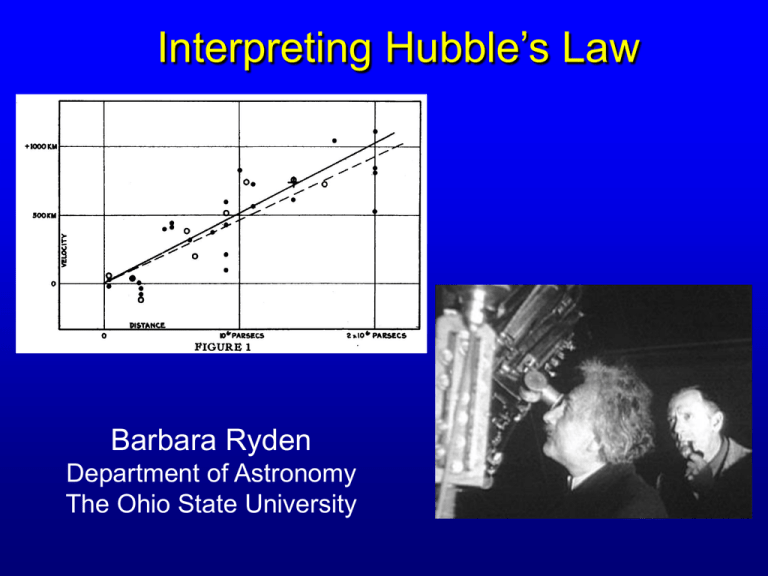
Interpreting Hubble’s Law Barbara Ryden Department of Astronomy The Ohio State University All physics & astronomy majors should take a cosmology course as a “capstone” experience. thermodynamics, statistical mechanics, quantum mechanics, classical dynamics, general relativity, nuclear physics, atomic physics, particle physics… For non-science majors, a historical overview of cosmology emphasizes how new observations lead to new cosmological models. Malcolm Longair (1993) QJRAS, 34, 157: Hubble (1929) PNAS, 15, 168 Lesson: Typos happen. Hubble (1929) PNAS, 15, 168 What are “VELOCITY” and “DISTANCE”? Hubble (1929) PNAS, 15, 168 Humason (1931) ApJ, 74, 35 “VELOCITY” = c z , where c = speed of light and z = percentage shift in wavelength of light. Observation = redshift (z) Interpretation = velocity (v) (Mt. Wilson Observatory, 1931) Possible interpretations of the observed redshift: Doppler shift: z = v/c (Galaxies are moving away from the observer through space.) Gravitational redshift: z = vesc/c (More distant galaxies are more luminous, and have deeper potential wells.) Cosmological redshift: z = aobservation/aemission - 1 (In the limit of small redshift, z = v/c, where v is the relative speed of emitter and observer due to expansion of space.) Tired light: z = Eemission/Eobservation - 1 (Photons lose energy as they move through static space.) λ observed λ 0 c λ0 Hubble (1929) PNAS, 15, 168 Big Problem for Astronomers: no sense of depth looking at the sky. Comet Hale-Bopp: 10 light-minutes away Andromeda Galaxy: 2 million light-years away Lesson: measuring the distance to an astronomical object is damnably difficult. Hubble used the “standard candle” method. f L 4 r 2 L assumed r 4 f observed Obvious problem with standard candles: if your assumed luminosity is crap, your computed distance is crap Edwin Hubble fell into this trap. (Beware of “appeal to authority”: even Homer nods.) 0.061 0.050 0.49 0.88 0.77 0.80 7.2 5.0 8.0 3.6 3.2 3.7 10. 5.4 4.7 12. 9.0 14. 7.5 12. 17. 16. 17. 17. Hubble (1929) PNAS, 15, 168 λ observed λ 0 c λ0 L wrong 4 π f observed Hubble (1929) PNAS, 15, 168 Hubble’s law in mathematical form: v = H0 r v = “velocity” r = “distance” H0 = Hubble constant Hubble’s value of the Hubble constant ≈ 500 km/s/Mpc WMAP value = 71.0 ± 2.5 km/s/Mpc Not-as-obvious problem with standard candles: our equation assumes Euclidean geometry. What if Euclid nods on large scales? Another problem with standard candles: our equation assumes photon energy is conserved. Redshifted photons lose energy. But wait! These aren’t problems, they are opportunities! Deviations of Hubble’s law from a straight line at large distance/redshift tells us about the expansion history of the universe. One set of observations … many possible interpretations. Hubble acknowledged the existence of both Doppler shifts and cosmological redshifts.

